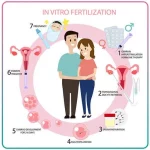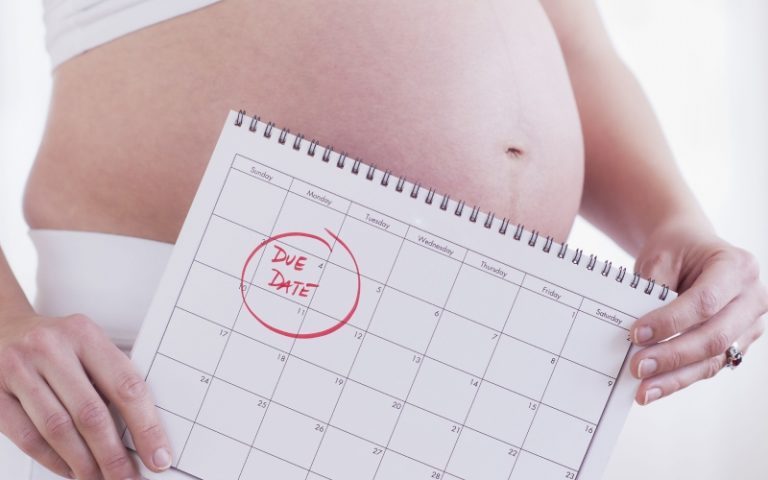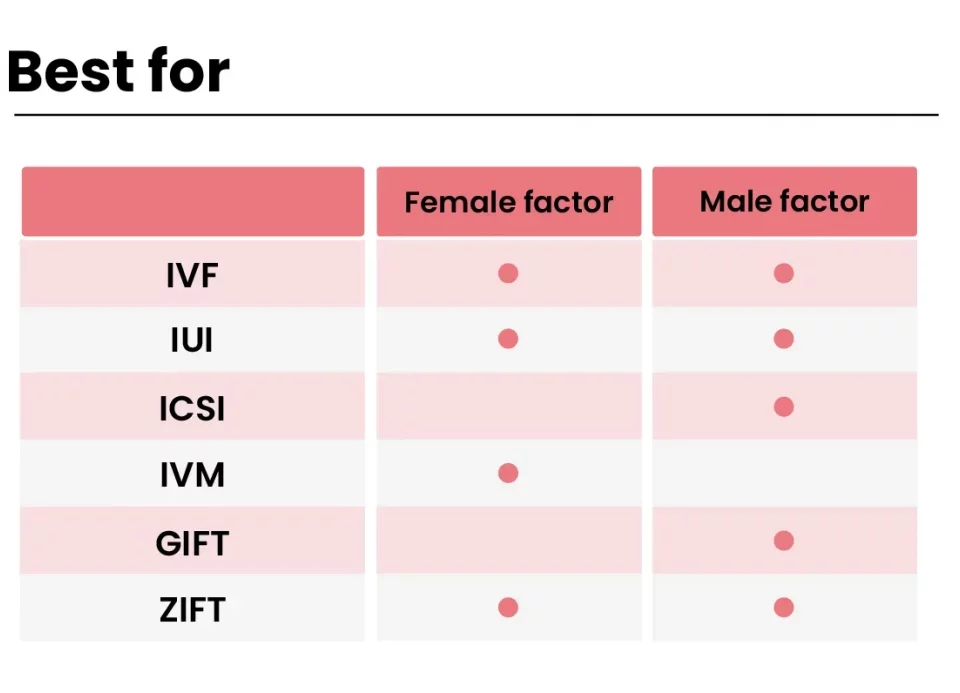
How Many Eggs Get Fertilized in IVF? Your Ultimate Guide to Understanding the Numbers
April 19, 2025Is Donald Trump Banning IVF?
April 20, 2025How to Calculate Your Due Date After IVF: A Simple, Step-by-Step Guide

How to Calculate Your Due Date After IVF: A Simple, Step-by-Step Guide
Congratulations! If you’re reading this, you’re likely on an exciting journey through in vitro fertilization (IVF) and dreaming about the day you’ll meet your little one. One of the first questions that pops up after a successful embryo transfer is, “When will my baby arrive?” Unlike natural pregnancies, where due dates can feel like a guessing game, IVF offers a unique advantage: you can pinpoint your due date with surprising accuracy. But how exactly does it work?
In this guide, we’ll walk you through everything you need to know about calculating your due date after IVF. From understanding the science behind embryo transfers to practical tips for tracking your pregnancy, we’ve got you covered. Plus, we’ll dive into some fresh insights—like how frozen embryos change the math and what recent studies say about IVF due date accuracy—that you won’t find in most articles out there. Ready to get started? Let’s jump in!
Why IVF Due Dates Are Different (and More Reliable)
Pregnancy due dates usually hinge on the first day of your last menstrual period (LMP)—a method that assumes ovulation happens like clockwork. But if you’ve gone through IVF, you know your journey doesn’t follow that script. With IVF, conception happens in a lab, and the embryo is transferred into your uterus on a specific day. That precision is what makes IVF due dates stand out.
Think of it like this: in a natural pregnancy, it’s like trying to guess when a seed was planted in a garden. With IVF, you know the exact moment the seed (your embryo) was placed in the soil (your uterus). This eliminates a lot of the uncertainty, giving you a clearer timeline. Studies, like those from the American College of Obstetricians and Gynecologists (ACOG), back this up, showing that IVF due dates are often more accurate because they’re based on known dates rather than estimates.
So, what’s the key to figuring out your due date? It all boils down to two things: the type of embryo transfer you had and the date it happened. Let’s break it down.
The Basics: Day 3 vs. Day 5 Embryo Transfers
When it comes to IVF, embryos are typically transferred either 3 days or 5 days after fertilization. This timing affects how you calculate your due date, so let’s look at both scenarios.
Day 3 Embryo Transfer
A Day 3 transfer means your embryo was placed in your uterus three days after the egg was fertilized in the lab. At this stage, the embryo is still pretty tiny—usually made up of 6 to 8 cells. To find your due date, you start with the transfer date and add 263 days. Why 263? A full-term pregnancy lasts about 266 days from fertilization, and since your embryo is already 3 days old, you subtract those 3 days from the total.
Here’s how it works:
- Say your embryo was transferred on April 10, 2025.
- Add 263 days.
- That lands you on December 29, 2025—your estimated due date (EDD).
Day 5 Embryo Transfer
A Day 5 transfer, often called a blastocyst transfer, happens when the embryo has developed further, reaching about 70 to 100 cells. This is the most common type of transfer today because it gives doctors a better chance to pick the healthiest embryo. For this one, you add 261 days to the transfer date. The embryo is 5 days old, so you subtract 5 days from the 266-day pregnancy length.
For example:
- Transfer date: April 10, 2025.
- Add 261 days.
- Your due date is December 27, 2025.
Quick Tip: Fresh vs. Frozen Embryos
Here’s something many articles skip over: whether your embryo was fresh or frozen doesn’t change the math! A frozen embryo is “paused” at its Day 3 or Day 5 stage until it’s thawed and transferred. So, you still use 263 days for a Day 3 frozen transfer or 261 days for a Day 5 frozen transfer. Pretty cool, right?
✔️ Pro Tip: Write down your transfer date as soon as it happens—it’s the anchor for all your calculations!
Step-by-Step Guide to Calculate Your IVF Due Date
Now that you know the basics, let’s make it super simple with a step-by-step process you can follow at home. Grab a calendar (or your phone’s calculator app), and let’s do this together.
Step 1: Confirm Your Transfer Date
Check with your fertility clinic for the exact day your embryo was transferred. This is your starting point. For our example, let’s use May 1, 2025.
Step 2: Identify the Embryo Type
Was it a Day 3 or Day 5 transfer? Ask your doctor if you’re unsure. Let’s say it was a Day 5 transfer.
Step 3: Add the Right Number of Days
- Day 3 transfer: Add 263 days.
- Day 5 transfer: Add 261 days.
For our Day 5 example: May 1, 2025 + 261 days = January 17, 2026.
Step 4: Double-Check with an Online Tool
Not a math whiz? No worries! Plug your transfer date and embryo type into an IVF due date calculator online (like the ones from What to Expect or Enfamil). It’ll spit out the same date in seconds.
Step 5: Mark Your Calendar
Circle that date—it’s when you’ll be about 40 weeks along. But keep in mind, only about 4% of babies arrive exactly on their due date, so think of it as a ballpark.
Here’s a handy table to keep it straight:
| Transfer Type | Days to Add | Example Transfer Date | Due Date |
|---|---|---|---|
| Day 3 | 263 | May 1, 2025 | January 19, 2026 |
| Day 5 | 261 | May 1, 2025 | January 17, 2026 |
Interactive Checkpoint: What’s Your Due Date?
Let’s make this fun! Take a second to calculate your own due date. Jot down your transfer date and embryo type below, then follow the steps above. Share your result with a friend or in your pregnancy journal—it’s a milestone worth celebrating!
- My transfer date: ___________
- Embryo type (Day 3 or 5): ___________
- My due date: ___________
How does it feel to see that date? Exciting, huh?
What About Egg Retrieval or Fertilization Dates?
You might be wondering, “Can’t I just use the day my eggs were retrieved or fertilized?” Good question! Some clinics do calculate due dates from the egg retrieval date, adding 266 days since that’s when fertilization typically happens. For example, if your eggs were retrieved on April 25, 2025, and fertilized that day, your due date would be January 16, 2026.
But here’s the catch: most doctors prefer the transfer date because it’s when the embryo officially starts its journey in your uterus. The retrieval method works fine for fresh embryo cycles, but it gets tricky with frozen embryos, which might be transferred weeks, months, or even years later. Stick with the transfer date for the simplest, most consistent result.
✔️ Fun Fact: A 2023 study in Fertility and Sterility found that transfer-date calculations align better with ultrasound measurements in early pregnancy than retrieval-date estimates.
Frozen Embryo Transfers: A Deeper Look
Frozen embryo transfers (FETs) are becoming more popular—about 70% of IVF cycles in the U.S. now use frozen embryos, according to the CDC. This trend has sparked some unique questions about due dates that don’t get enough attention elsewhere.
When an embryo is frozen, its development is essentially “on hold.” A Day 5 embryo frozen in 2024 and transferred in 2025 is still a Day 5 embryo on transfer day. So, you’d still add 261 days from the transfer date, not the freeze date. This blows my mind every time I think about it—it’s like time travel for your future baby!
But here’s something new to chew on: a 2024 study from the Journal of Assisted Reproduction and Genetics suggests that FET pregnancies might have slightly longer gestation periods (by about 1-2 days) compared to fresh transfers. Why? Researchers think it could be tied to the uterine lining preparation with hormones before an FET. It’s a small difference, but it’s worth chatting about with your doctor if you’re curious.
❌ Heads-Up: Don’t stress if your FET due date feels “off” by a day or two—your baby’s still on track!
Twins or Multiples: Does It Change the Math?
If you’re expecting twins or more from IVF (yay, double blessings!), you might wonder how that affects your due date. Technically, the calculation stays the same—263 days for Day 3 or 261 days for Day 5. But here’s the reality: multiples often arrive earlier.
- Twins typically deliver around 35-37 weeks (245-259 days from transfer).
- Triplets might come even sooner, around 32-34 weeks (224-238 days).
So, while your “official” due date is still 40 weeks out, your doctor will likely monitor you closely and adjust expectations as you get further along. One mom I heard about had a Day 5 transfer on June 15, calculated a due date of March 2, but welcomed her twins on February 1—five weeks early but perfectly healthy!
✔️ Pro Tip: Start prepping your nursery a bit earlier if you’re expecting multiples—just in case!
How Accurate Are IVF Due Dates, Really?
You might be thinking, “This all sounds great, but will my baby actually arrive on that date?” Fair point! IVF due dates are more precise than LMP-based ones, but they’re still estimates. A 2022 study in Ultrasound in Obstetrics & Gynecology found that about 70% of IVF babies are born within a week of their calculated due date, compared to 60% for natural pregnancies.
What throws things off? A few factors:
- Embryo growth rate: Some embryos take a little longer to implant.
- Your body’s response: Hormone levels and uterine conditions play a role.
- Preterm labor: About 12% of IVF pregnancies deliver before 37 weeks, per the CDC.
Your first ultrasound (around 6-8 weeks) will give an even clearer picture. The tech will measure your baby’s crown-to-rump length and tweak the due date if needed. It’s like a reality check for your calendar math!
Interactive Poll: When Do You Think Your Baby Will Arrive?
Let’s get your take! Based on your due date, when do you think your little one will actually show up? Vote below:
- A week early
- Right on time
- A week late
- Totally unpredictable!
Tally your guess with your partner or a friend—it’s a fun way to keep the excitement going!
Beyond the Calculator: Tracking Your IVF Pregnancy
Once you’ve got your due date, the real fun begins: watching your pregnancy unfold. Here are some practical ways to stay on top of it without feeling overwhelmed.
Use a Pregnancy App
Apps like What to Expect or Ovia Pregnancy let you input your IVF transfer date and track milestones week by week. You’ll get updates like “Your baby’s the size of a blueberry!”—cute and motivating.
Early Ultrasound Milestones
Your first ultrasound isn’t just for due date confirmation—it’s a peek at your baby’s heartbeat! For a Day 5 transfer on May 1, expect:
- 6 weeks (May 29): Heartbeat visible.
- 12 weeks (July 24): First trimester screening.
Chat with Your Doctor
Your fertility clinic and OB-GYN are your go-to guides. Ask them:
- “Does my due date match the ultrasound?”
- “Any adjustments I should know about?”
✔️ Bonus: Keep a journal of your symptoms and appointments—it’s a sweet keepsake for later!
Unique Insight: The Emotional Side of Knowing Your Due Date
Here’s something you won’t find in most guides: calculating your due date after IVF isn’t just about numbers—it’s a big emotional moment. After months (or years) of waiting, seeing that date on your calendar can feel like a finish line finally coming into view. One friend told me she cried happy tears when she figured out her due date—it made everything real.
But it can also stir up nerves. What if things don’t go as planned? That’s normal. Give yourself grace to feel all the feels, and lean on your support crew—whether it’s your partner, a friend, or an online IVF community.
IVF Due Dates and Preterm Birth: What the Latest Research Says
Most articles stop at the calculation, but let’s dig deeper into something critical: preterm birth rates in IVF pregnancies. A 2023 study in Human Reproduction found that IVF singletons are 1.5 times more likely to be born preterm than naturally conceived babies. For twins, that risk jumps even higher.
Why does this matter for your due date? It means your “40-week” mark might shift earlier. Factors like maternal age, multiple embryos, or uterine conditions can nudge things along. The good news? Advances in neonatal care mean preterm babies today have better outcomes than ever—90% of those born at 28 weeks survive, per the March of Dimes.
✔️ Action Step: Talk to your doctor about your specific risks and how they might tweak your due date expectations.
Planning Around Your Due Date: Practical Tips
Knowing your due date is just the start—now you can plan! Here’s how to make the most of it.
Baby Prep Timeline
- 20 weeks (halfway!): Start nursery shopping.
- 30 weeks: Pack your hospital bag.
- 36 weeks: Install the car seat.
Work and Leave
Chat with HR about maternity leave. If your due date’s January 17, 2026, you might plan to wrap up work by mid-December—giving you wiggle room if baby arrives early.
Celebrate Milestones
Throw a mini party when you hit 12 weeks or 28 weeks. It’s a great way to share the joy with loved ones!
Real-Life Example: Sarah’s IVF Journey
Meet Sarah, a 34-year-old mom-to-be from California. Her Day 5 embryo transfer was on March 15, 2025. She added 261 days and landed on December 1, 2025, as her due date. At her 8-week ultrasound, the doctor confirmed her baby was measuring right on track. Sarah started a countdown calendar, marking fun milestones like “Baby’s first kicks” at 20 weeks. Her twins arrived a bit early on November 20, but she says knowing her due date gave her a sense of control during a whirlwind pregnancy.
Sarah’s tip? “Don’t obsess over the exact day—enjoy the ride!”
Common Questions You Might Have
Still got questions? Here are some I’ve heard from other IVF parents, answered just for you.
What If I Used Donor Eggs?
The calculation stays the same—use the transfer date and embryo age (Day 3 or 5). Donor eggs don’t change the gestation timeline.
Can My Due Date Change?
Yep, ultrasounds might shift it by a few days. Trust your doctor’s updates over your initial math.
Does IVF Mean a C-Section?
Not necessarily! While IVF pregnancies have a slightly higher C-section rate (about 40% vs. 32% for natural pregnancies, per the CDC), it’s not a guarantee. Your birth plan is still your call.
Interactive Checklist: Are You Ready for Your Due Date?
Let’s wrap up with a quick checklist to boost your confidence. Check off what you’ve done:
- Calculated my due date
- Confirmed it with my doctor
- Downloaded a pregnancy app
- Started a baby countdown
How many did you check? If it’s all four, you’re rocking this!
Final Thoughts: Your Due Date Is Just the Beginning
Figuring out your due date after IVF is like unlocking the first chapter of your parenthood story. It’s a mix of science, a little math, and a whole lot of hope. Whether your baby arrives right on schedule or decides to keep you guessing, this date gives you something tangible to hold onto as you prep for the adventure ahead.
So, take a deep breath, mark that calendar, and let yourself dream about the moment you’ll meet your little miracle. You’ve got this—and your due date is proof you’re one step closer! What’s the first thing you’ll do now that you know when baby’s coming? Share your plans with someone special—it’s too good to keep to yourself!

